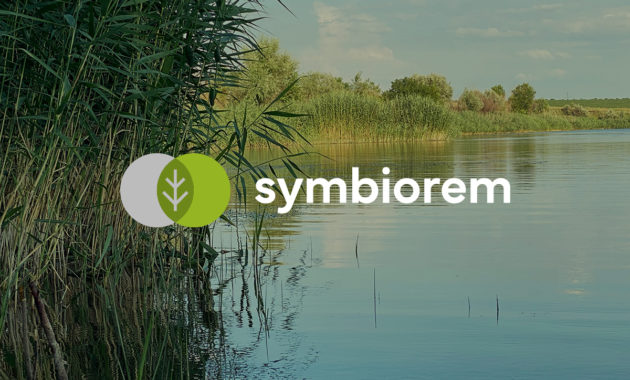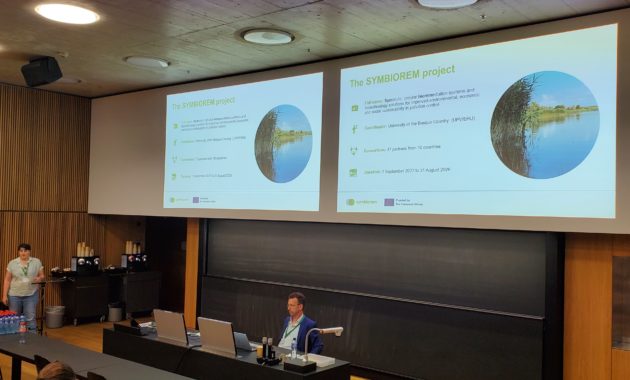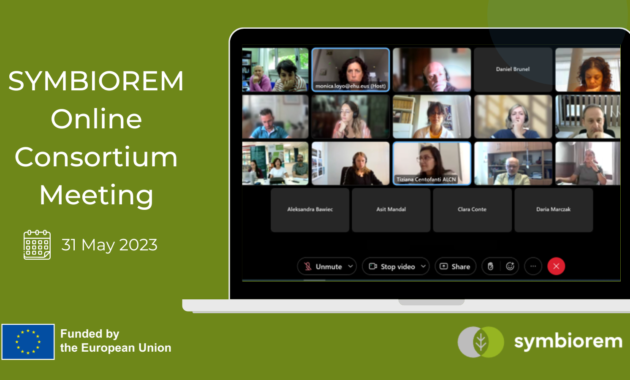In a world where the footprints of rapid population growth and industrialization are increasingly evident, we find ourselves at a critical juncture. The accumulation of toxic and recalcitrant compounds in our soil, water, and air, a direct consequence of human activities, poses a grave threat to the health of all living beings and the balance of our ecosystem. The urgency for effective and sustainable solutions to remediate these contaminated environments has never been greater. Nevertheless, amidst these challenges, there is a beacon of hope – the SYMBIOREM project!
Funded by the European Union, SYMBIOREM is a testament to human ingenuity and to our relentless pursuit of harmony with nature. It aims to tackle environmental pollution head-on by leveraging the bioremediation capabilities of microorganisms, microbiomes, proteins, plants, and animals. Bioremediation, a process that uses these living organisms to remove or neutralize pollutants, is at the heart of SYMBIOREM’s mission.
Bioremediation, a promising solution to environmental pollution, harnesses the power of biological systems to transform the pollutants into less harmful or non-toxic compounds. This process can utilize a variety of organisms, including plants, algae, bacteria, fungi, which are capable of metabolizing or sequestering contaminants. The effectiveness of bioremediation can be further enhanced through two primary technologies: bioaugmentation and biostimulation. Both approaches are integral to the strategies employed by the SYMBIOREM project. Bioaugmentation involves introducing specific microorganisms that can degrade target pollutants, while biostimulation involves adding nutrients or other substances to stimulate the growth and activity of indigenous microorganisms.
One specific form of bioremediation is phytoremediation, which employs plants to absorb, sequester, or metabolize various pollutants in the soil, water, or air. This method is particularly effective in treating large areas of contamination and offers the added benefits of restoring the landscape.
It is important to notice that bioremediation has several advantages over conventional physical and chemical methods of remediation. Bioremediation is more environmentally friendly, as it relies solely on natural processes, it minimizes damage to the ecosystem, it leads to a reduction in energy consumption and emissions, it can improve water, air, and soil quality, including increased C sequestration. In addition, bioremediation is also more cost-effective, as it does not require expensive equipment or infrastructure. Bioremediation can also achieve complete mineralization of the pollutants in-situ and ex-situ, resulting in the recovery of the natural functions of the environment.
Bioremediation has been successfully applied to treat various types of contaminants, such as heavy metals, hydrocarbons, xenobiotics, and radioactive elements. It has also been used to remove arsenic, mercury, and other toxic metals from mining sites, industrial effluents, and groundwater, by using plants and algae that can accumulate (i.e., hyperaccumulator plants) and extract the metals at high concentrations to return the ecosystem to a less toxic state. Bioremediation has also been chosen to degrade pesticides, herbicides, and other synthetic organic compounds from agricultural lands, wastewater, and soil, by using bacteria and fungi that can break down the complex molecules.
While bioremediation is not a novel technology, it has been continuously refined and enhanced over time. The advancements in biotechnology, molecular biology, and bioinformatics have paved the way for the identification, characterization, and engineering of new and more efficient bioremediators. These developments have led to the creation of innovative methods and tools for monitoring and assessing the effectiveness and impact of bioremediation. New challenges and opportunities for bioremediation have also emerged, such as addressing emerging contaminants, integrating bioremediation with other technological solutions, and scaling and implementing bioremediation in different contexts and scenarios.
Thus, the journey of bioremediation continues to evolve, offering natural, effective, and sustainable ways to restore the quality and functionality of the environment. Bioremediation can also contribute to the development of a circular bioeconomy, where the recovered metals and nutrients are converted into valuable resources. Bioremediation can also enhance the biodiversity and resilience of the ecosystem, as well as the well-being and prosperity of society.
With a focus on the four most common pollutants of soil and groundwater in Europe, as well as on mixed contamination, eutrophication, organic micropollutants, and microplastics, SYMBIOREM is developing a suite of bioremediation strategies. These strategies are designed to not only clean-up and restore contaminated soil and water but also to enhance bioremediation efficiency, use secondary inputs, and valorize residues and contaminants.
In the face of daunting environmental challenges, SYMBIOREM stands as a symbol of our collective resilience and commitment to a cleaner, healthier, and more sustainable future.


